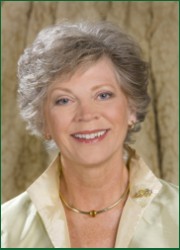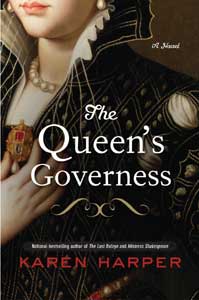



RSS: Blog FeedSubscribe to
Comments [Atom]
April 2007May 2007June 2007July 2007August 2007September 2007October 2007November 2007December 2007January 2008February 2008April 2008May 2008July 2008September 2008October 2008November 2008December 2008January 2009February 2009March 2009April 2009May 2009June 2009July 2009August 2009September 2009December 2009May 2010October 2010March 2011
History Buff is a site
for history lovers everywhere. It is also a site very interested in women
of the past. Although I (sadly) no longer have time to continue these interviews, here is an archive of Q&As about women's lives
in history. And please feel free to stop by History Buff's
sister site for archaeological discoveries making news today. Enjoy!

As an
historical fiction writer I am fascinated by news stories featuring the
past as it's unearthed and reimagined and brought to life. I spend a
large quantity of time searching for news in archaeology and history.
Once in a great while a new archaeological discovery will act as an inspiration
for what I'm currently writing. But most of the time the news stories
I read are simply interesting tidbits of history. Unfortunately, I have
disallowed comments because I travel so frequently that I can neither
monitor nor respond to them. But I would still love to share the history
that I find fascinating each day. So welcome! And feel free to visit my
website at www.michellemoran.com
or contact me at authormichellemoran at hotmail dot com.
Logo designed by Shaun Venish
Blog designed by Mia Pearlman Design
Q&A With Historical Fiction Author Karen Harper
Q: Why did you decide to base a historical novel on Kat Ashley when you usually focus on more major Tudor personalities? [Harper’s earlier novels include The Last Boleyn and Mistress Shakespeare.]
A: For two reasons. First of all, Kat (Katherine Champernowne Ashley, 1506 – 1565), was involved with most of the Tudor greats: King Henry VIII, Anne Boleyn, Mary Tudor, Thomas Cromwell, Thomas Seymour, Queen Katherine Parr, and, of course, Elizabeth Tudor. Kat was
Secondly, Kat has her own great story to tell. The novel is a rags-to-riches novel, a mother-daughter book and a powerful love story with danger and daring throughout.
Q: Then why hasn’t Kat Ashley been the focus of Tudor novels before?
A: I can only guess at that, but I’m glad I have the first in-depth look at her. Of course, Kat has appeared in numerous novels that deal with
By the way, as you may know, spelling during these early English eras was not standardized. I found Kat’s first name, maiden name, and last name spelled a variety of ways. There is much ado over whether her married name was Ashley or Astley, but Elizabeth herself once spelled it Ashiley, so I’ll let the queen decide for me to use Ashley and not Astley.
Q: Speaking of her married name, who did she marry? Obviously, someone of whom the queen approved.
A: Yes, when I did the research, I was really excited to find that Kat has a bittersweet but triumphant love story. She married John Ashley who was a cousin of Anne Boleyn’s and who originally came to court to serve her. His talents with training horses helped him to survive the Boleyn downfall. He later served the young
Q: Did Queen Elizabeth ever record what she thought of the Ashleys?
A: She did—more than once. When Kat and John were sent to the Tower of London to be interrogated about whether Elizabeth was part of Tom Seymour’s treason plot against her young half-brother King Edward IV, Elizabeth wrote a letter, begging the powers-that-be to be kind to Kat, “Because that she hath been with me a long time and many years, and hath taken great labor and pain in bringing of me up in learning and honesty…and be good to Master Ashley, her husband, which because he is my kinsman.” Later, Elizabeth also wrote, “We are more bound to them that bringeth us up well than to our parents, for our parents do that which is natural to them—that is bringeth us into the world—but our bringers up are a cause to make us live well to do it.” A ringing endorsement, I think, for the many grandmothers, caregivers and foster parents who bring up non-biological children even today.
Q: What’s the most surprising thing you’ve found in doing your Tudor research for your novels?
A: That’s a tough one, but I’d say that, even though I knew Henry VIII was not a good husband (duh!) he was also a very bad father. It’s a miracle that his three children, especially Elizabeth, turned out as well as they did. I am in the camp of researcher/writers who believe that
 Thank you, Karen! And feel free to visit Karen Harper online for more information about her amazing new novel!!
Thank you, Karen! And feel free to visit Karen Harper online for more information about her amazing new novel!!
Q&A With Historical Fiction Author Jessica James
![[may28cover_garamond.jpg]](https://blogger.googleusercontent.com/img/b/R29vZ2xl/AVvXsEhpCCb0jifW9NDg42uGa5-Ln0dgVytmSb4_pqU9Km_O22wuQofY6KNrCGznNlBSUZKIIypw6bUgwOK2p3yQxj6MwGVZX_zn6zkDPu3CyyZo5Vt4m7haHpbEO-HLJ_mM5ORid2qirIsCs8U/s220/may28cover_garamond.jpg)
Your novel, SHADES OF GRAY, tells the story of a Confederate soldier who meets his match in a Union spy. What drew you to this period in history?
Well, the easy answer is that I’m from Gettysburg, Pa., so I’ve been surrounded by Civil War history all my life. But the reality is, I didn’t have much of an interest in the War Between the States until I moved to Virginia in the 80s and learned about Confederate Colonel John S. Mosby. He is pretty much the epitome of the Southern cavalier – gallant, daring, romantic, and chivalrous. I began reading books on him, by him and about him, and, before I knew it, was a complete Civil War fanatic. Now I think I’m drawn to the era, not only because of the stories of gallantry and heroism, but by the morality, the manners, the patriotism and the principles that those on both sides of the war believed in and fought for.
How much of SHADES OF GRAY is based on fact, and how much is fiction?
The main characters are purely fictional, created against the backdrop of the war and interacting with real historical personalities such as Confederate General J.E.B. Stuart. I believe fiction is a great way for people to learn about history so my goal was to keep the reader entertained while giving them a historically accurate foundation.
I gave copies of Shades of Gray to Civil War history professors and other Civil War authors to check it for accuracy, (and even to General J.E.B. Stuart’s great-great grandson, who gave it a favorable review). However, most readers tell me they feel like they’ve read a wonderful love story – not a Civil War story – so that balancing act between fact and fiction is really important.
Your novel goes into great detail about battles that took place during the Civil War. How did you do your research for this?
I really completely immersed myself in the era, reading everything from obituaries and newspaper articles to diaries and war records. Battle scenes were difficult because, needless to say, I’ve never been in one. Attending large-scale re-enactments helped me somewhat with the sights, sounds and smells of battle and camp life. But reading the actual words of soldiers and civilians was what really gave me a glimpse into the horror and chaos of battle.
Tell us something surprising about women's lives during the Civil War.
Those who have read Shades of Gray know that the female character dresses as a man, and serves as a courier and spy for the Union. The character is completely fictional, but I have since learned there are at least 400 documented cases of women dressing as men and serving on the front lines – a few even achieved the status of officers. Most of them were only discovered after being wounded or killed in battle.
While I’m on the subject, at least six soldiers are known to have performed their military duties while pregnant, and two Confederate prisoners of war gave birth while incarcerated.
For those cases that are documented by newspaper articles or letters, one can only guess how many went undetected. I think the role of females on the battlefield during the Civil War is one of the best-kept secrets of that historical period.
What are you working on next?
I’m working on another Civil War novel, called Above and Beyond, in which the heroine plays the part of a strong Unionist in Virginia while secretly spying for the Confederacy.
Unfortunately, she is so convincing in her role that friends, neighbors and even her brother believe she is a traitor to the South. I chose this plotline because I can’t imagine the courage and strong will it would take to be despised and maligned by family and friends while nobly serving a cause – even more so during the Victorian era when reputation and allegiance were everything. I think it could be argued that it would take more strength and fortitude than fighting an outright battle with hundreds of your comrades surrounding you.
 Thank you, Jessica! And feel free to visit Jessica online for more information about her novel!
Thank you, Jessica! And feel free to visit Jessica online for more information about her novel!







